D. PolandBall and Polygon----线段树(树状数组)
PolandBall has such a convex polygon with n veritces that no three of its diagonals intersect at the same point. PolandBall decided to improve it and draw some red segments.
He chose a number k such that gcd(n, k) = 1. Vertices of the polygon are numbered from 1 to n in a clockwise way. PolandBall repeats the following process n times, starting from the vertex 1:
Assume you've ended last operation in vertex x (consider x = 1 if it is the first operation). Draw a new segment from vertex x to k-th next vertex in clockwise direction. This is a vertex x + k or x + k - n depending on which of these is a valid index of polygon's vertex.
Your task is to calculate number of polygon's sections after each drawing. A section is a clear area inside the polygon bounded with drawn diagonals or the polygon's sides.
There are only two numbers in the input: n and k (5 ≤ n ≤ 106, 2 ≤ k ≤ n - 2, gcd(n, k) = 1).
You should print n values separated by spaces. The i-th value should represent number of polygon's sections after drawing first i lines.
5 2
2 3 5 8 11
10 3
2 3 4 6 9 12 16 21 26 31
The greatest common divisor (gcd) of two integers a and b is the largest positive integer that divides both a and b without a remainder.
For the first sample testcase, you should output "2 3 5 8 11". Pictures below correspond to situations after drawing lines.
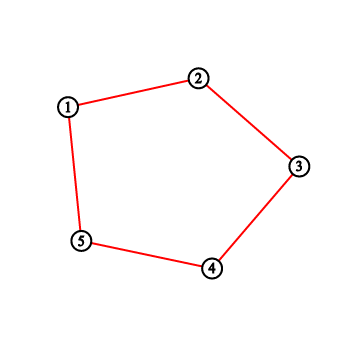
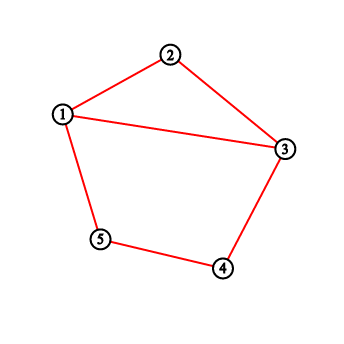
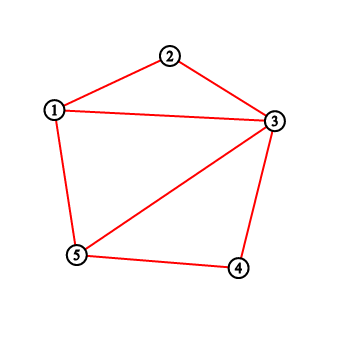

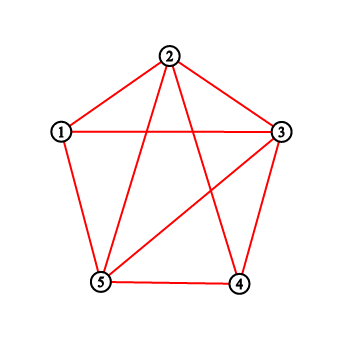
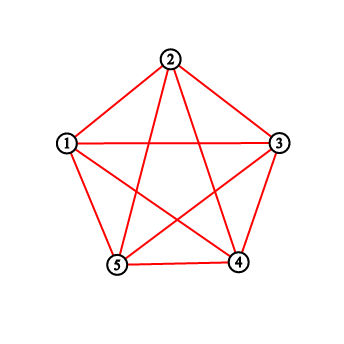
一开始这个题我找了个规律,结果错了......
题意:给出一个n边形,和距离k,第一次链接1和k+1,第二次链接k+1和(k+1+k)%n,依次进行,每次结束后输出n边形被分割成了几个区域。
有一个公式,我当时推出来了。
新加入一条直线后的区域块数 = 原有的区域块数 + 与该直线相交直线的条数 +1
很容易就能想到这个式子,但是我却没有想到用线段树或者是树状数组,太菜了。。。
有一个坑点,也是Hack点,当k>n/2时,k=n-k;
附上大牛的链接:
http://blog.csdn.net/harlow_cheng/article/details/54570832
代码:
#include
#include
#include
#define LL long long
using namespace std;
const int MAXN=1e6+100;
LL sum[MAXN<<2];
int n,k;
LL query(int L,int R,int l,int r,int rt){
if(L>R){
return 0;
}
if(L<=l&&r<=R){
return sum[rt];
}
int m=(l+r)>>1;
LL ans1=0,ans2=0;
if(L<=m){
ans1=query(L,R,l,m,rt<<1);
}
if(m>1;
if(pos<=m)
updata(pos,l,m,rt<<1);
else
updata(pos,m+1,r,rt<<1|1);
sum[rt]=sum[rt<<1]+sum[rt<<1|1];
}
int main(){
scanf("%d%d",&n,&k);
k=min(k,n-k);
int now=1;
LL ans=1;
for(int i=1;i<=n;i++){
int nex=now+k;
LL temp;
if(nex>n)
temp=query(now+1,n,1,n,1)+query(1,nex-n-1,1,n,1);
else
temp=query(now+1,nex-1,1,n,1);
ans+=temp+1;
cout<n)
nex-=n;
updata(nex,1,n,1);
now=nex;
}
return 0;
}